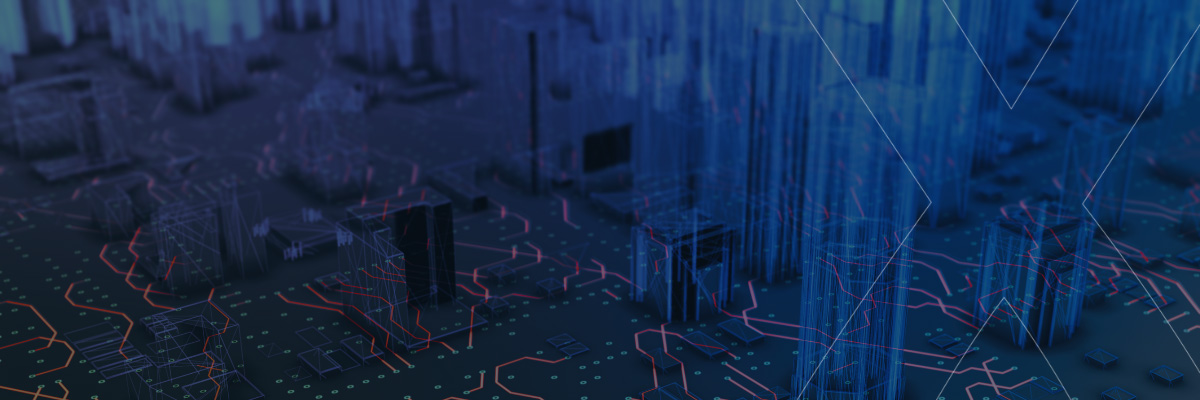Even before the COVID-19 pandemic forced the world to pivot and adapt in ways we may not have thought previously possible, we were already on the road to unprecedented change in the way we do almost everything.
From work and travel to the factors which make up our lifestyles, the pandemic accelerated this change and forced us to reimagine many things we took for granted. And this is just the beginning.
The driving force and determining factor in this change is IT infrastructure – the hardware, software, network services, and resources which enable IT operations.
The world of tomorrow depends on IT infrastructure, and the future of IT infrastructure is changing in fundamental ways.
The Needs of Tomorrow
The massive acceleration in the move to digital has led to a huge demand for cloud services and the expansion and development of digital infrastructure more broadly.
This created momentum for the increasingly rapid adoption of technology. Hyperconnectivity – the interconnection of all devices, even those not typically considered candidates for connectivity – is happening. Smart cities, powered by the Internet of Things (IoT) are a reality. These create a need for handling, processing, and storing massive amounts of data. Applications are becoming increasingly data-centric, a trend likely to continue so long as the main financial driver is user data.
Evidently, connectivity and data management factors hold the key to deriving value from IT infrastructure and will therefore shape its development. However, infrastructure development does not exist in isolation. It is subject to human and environmental factors which also shape what IT infrastructure will become.

Considerations for IT Infrastructure of the Future
The growing IT industry has the potential to make our world better. Examples include our management of resources, combating pollution and climate change, and improving health outcomes. Attached to these benefits are risks and opportunities for our consideration.
Security
There is a growing imperative to protect data at a personal level, public level, and enterprise level. IT infrastructure is now a key element of enterprise innovation and competition, and developments thereof must hold security as a primary concern.
For example, a key consideration for businesses is the choice between public cloud versus on-premises private cloud data centres which reflects a trade-off between the need to manage cost and flexibility and the need to ensure security. The infrastructure of the future will likely offer a ‘best of all world’s scenario.
Human Factors
IT infrastructure must be expanded at scale and pace, yet all indications are that the skilled people required for managing IT infrastructure resources are becoming increasingly rare to find and difficult to retain. A skills gap is certain to happen, and that is where automation technology comes in.
Resources such as data centres will likely become partially or wholly automated, using robots, Artificial Intelligence, and machine learning. This offers the benefit of more effective monitoring of these sensitive environments and more efficient response to problems resulting in better maintenance, better monitoring, better security, and better management of IT processes, all at a lower cost.
Sustainability
IT infrastructure as it stands is energy-intensive, and this will need to be rectified in line with global sustainable development goals. Solutions will include improving operating efficiencies and implementing sustainable energy generation, carbon offsets, and other similar measures.
Once we understand the picture of what future infrastructure will look like we can begin to look at how it may be rolled out in a globally connected world.
Managing Supply in the Face of Uncertainty and Rapid Change
The pandemic has shown how global supply chains are sensitive to disruption, and how the consequences of disruption are amplified.
In the case of IT infrastructure, the supply chain is made up of businesses creating, financing, and selling technical hardware and the corresponding software. The current structure includes layers of cost, complexity, and potential delays caused by middlemen, and a massive opportunity exists for bringing the end-user closer to the manufacturers and developers.
The success of this hinges on managing the deployment of resources from where they are produced to where they are needed in the world.
Evolution in thinking around ownership of infrastructure will also influence how infrastructure is rolled out, and subsequently how the supply chain develops. Infrastructure as a Service (IaaS) and Managed Service Providers (MSPs) allow businesses to balance CAPEX and OPEX and achieve greater flexibility in the infrastructure available to them.
Navigating the Future of IT Infrastructure
We have observed the need to prioritize the development of IT infrastructure. For businesses, this is becoming an existential imperative. Technology is improving to make IT infrastructure faster, more reliable, and more secure, for the benefit of business and society.
In a changing world with changing needs the IT infrastructure of the future needs to be agile, dynamic, and adaptive to both business needs and market demands. A large part of the future of global IT infrastructure will be about effectively managing supply chains to ensure that infrastructure is deployed internationally without prohibitive layers of complexity and cost.
In an evolving environment, an organization needs to find a partner that understands the global supply chain environment to ensure the successful deployment of IT infrastructure globally. TecEx is here to help you ensure hassle-free global deployment of all your IT hardware. Find out more about our Importer of Record service.
